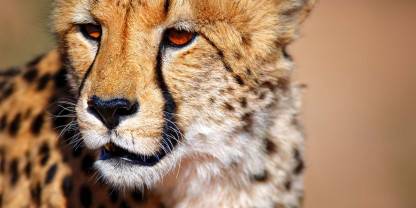Average Expert Rating
Rating Breakdown
Write a User ReviewAn awesome chunk of raw Kalahari
I stayed at Twee Rivieren Rest Camp, just inside the main entrance to the South African section of the park (the Botswana section does require a 4WD). Bringing a few creature comforts to the Kalahari, the camp had self-catering cottages, a shop and a restaurant. On a guided sunrise drive, huddling against the desert cold before the heat began for another day, we met a lion purring along the road. Kgalagadi is one of the world's best places to spot big cats,
Read more
with about 800 lions, cheetahs and leopards among its 2,000 predators. What's more, I savoured every sighting in that extreme setting, and marveled at animals from ostriches to antelopes surviving in the dry and merciless environment.Quintessential Africa
The first time I visited the Kalahari I loved everything about it – the unrivalled big cat sightings, the fiery sunsets, the Lion King-like landscapes and the sandy roads, largely free of vehicles. I thought I might be biased – it was my honeymoon you see – but on my return I found that it lived up to every expectation. This is truly the quintessential African safari experience – the only things missing are elephants and rhinos. Still, it is often the predators that people yearn to see on safari and Kgalagadi boasts an amazing amount of lions, cheetahs, hyenas and leopards. I attempted a solo visit in my compact rental car and while sections of the park are easily accessible, you really need a 4WD to get the best from the Kgalagadi: lions feasting so close that you can smell their kill, a wildebeest herd grazing right outside your safari tent or being woken in the night by a pack of howling hyenas.
A vast desert wilderness with impressive populations of large mammals and birds
The vast Kgalagadi Transfrontier Park is a true wilderness in the Kalahari Desert with striking red sand dunes and sparse vegetation dotted with isolated camel thorn trees. Our game-drives were superbly rewarding and the dry riverbeds of the Nossob and Auob showed the animals off to spectacular advantage. We saw cheetah, spotted hyena, bat-eared fox, black-backed jackal, and numerous antelope including the park’s prized gemsbok, a beautiful creature with a dark glossy coat and distinctive horns. Bird-watching was superb; specials included Cape vulture, chanting goshawk, secretary birds strutting along the dry riverbeds, and a Verreaux’s eagle owl in a tree just a metre above our car with an unidentified kill in its talons. The park is remote with uncomfortably high summer temperatures, but I certainly didn’t begrudge the hot dusty roads once I saw my first black-maned lion poised regally on the crest of a dune.
Hunters among the dunes
Peak season is February to April, when late rains bring prolific growth to the dry riverbeds and attract large herds of springbok, oryx and other antelope. At any time of year, you will also find such local specialities as meerkat, sociable weaver and barking gecko. Birders can enjoy a feast of raptors, plus bustards, coursers and other dry-country species.

